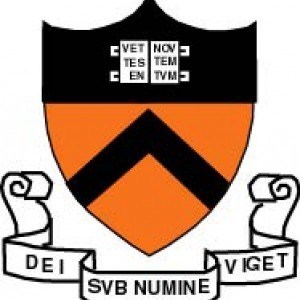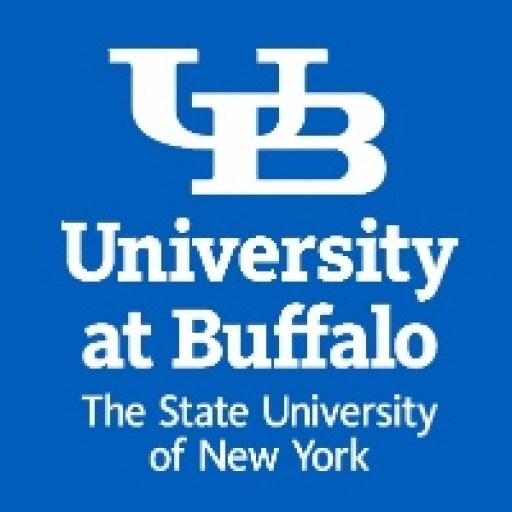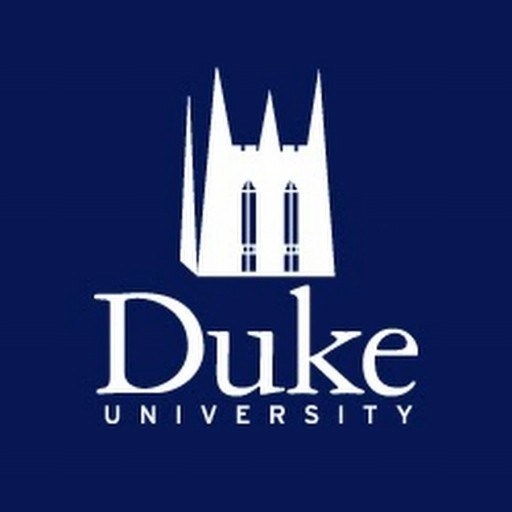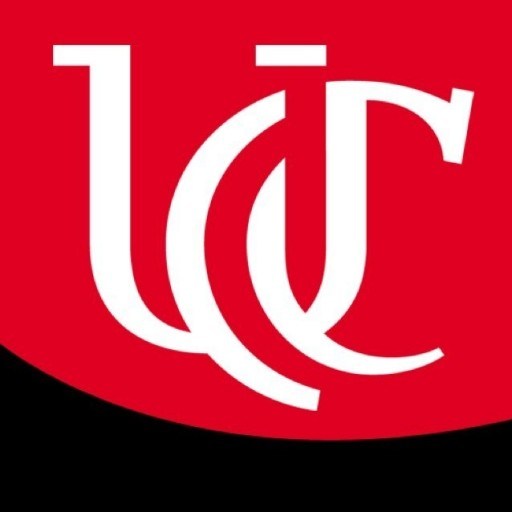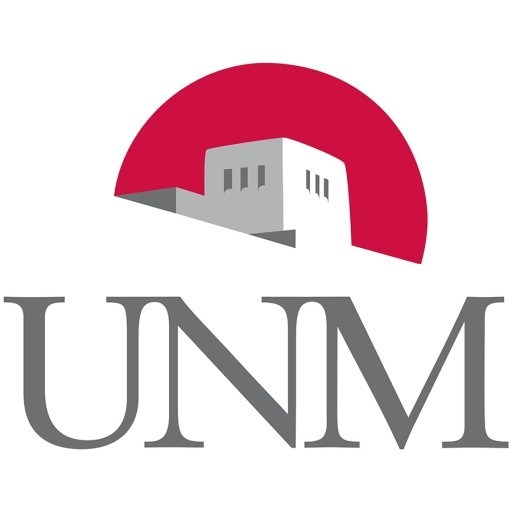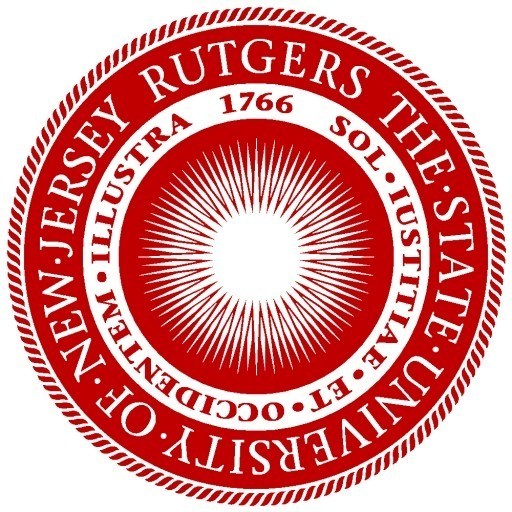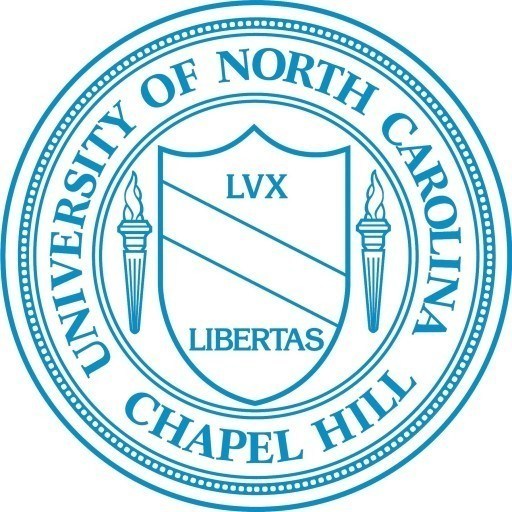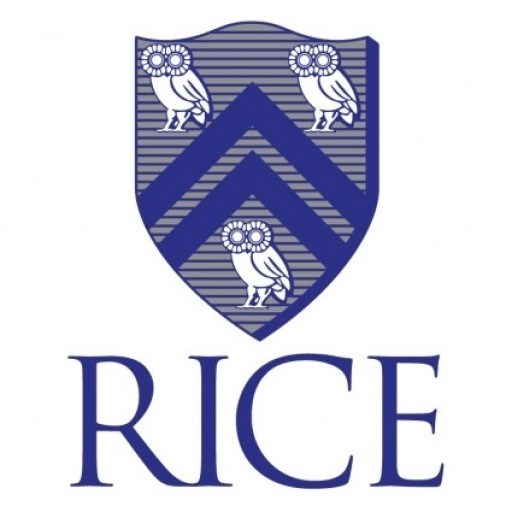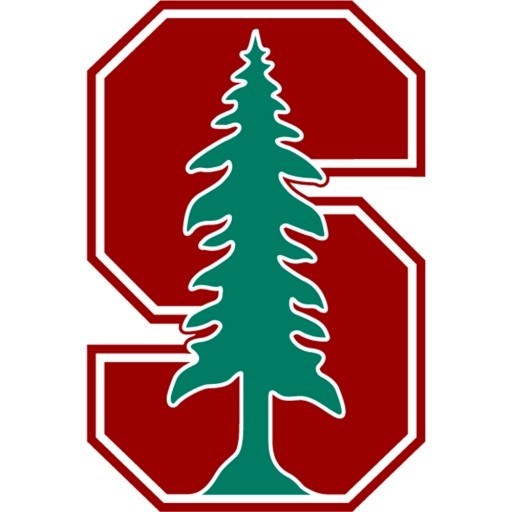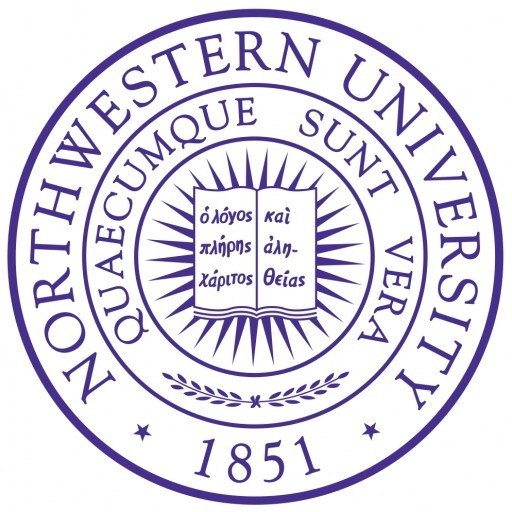Photos of university / #Princeton
The Department of Art and Archaeology is devoted to the study of the visual arts and the investigation of material artifacts from a wide range of cultures and periods. It is also where students interested in the practice of art (taught by faculty in the Program in Visual Arts) can pursue a major. Working closely with faculty members in small classes and often dealing directly with original objects and primary sources, students can explore subjects as diverse as Roman city planning, Greek archaeology, Japanese painting, Renaissance architecture, Chinese cinema, 19th-century photography, and contemporary art.
Students in the Department of Art and Archaeology learn techniques for analyzing visual materials and locating them within time and place. They also investigate the factors that influence stylistic change (e.g., religious beliefs, economic constraints, patronage demands, and technological changes). Like any humanist or social scientist, they must evaluate evidence, form hypotheses, test data, and draw conclusions. Successful majors master the translation of visual perceptions into linguistic expression, develop visual memory, and make connections with a wide array of historical evidence. Students must have at least a C- average based on courses and independent work in order to graduate from the department.
This central program allows a broad and rich exposure to the visual arts produced in a great variety of periods and locations.
A total of 10 courses in the Department of Art and Archaeology, including ART 100, ART 400 (Junior Seminar) and two seminars at the 400- or 500-level. Students must also take at least one course in each of the following three areas: Group 1 (ancient), Group 2 (medieval/early modern), and Group 3 (modern/contemporary). In choosing courses to satisfy the distribution requirement, students are encouraged to explore a range of media (e.g., architecture, painting, sculpture, photography, film). Thematic courses as well as courses spanning more than one area will be allocated to a distribution area on a case-by-case basis. ART 100, ART 400, and ART 401 count as departmentals but not as distribution courses.
Cognates. No more than two cognate courses taken in other departments (including the Program in Visual Arts) may be counted toward the 10 departmentals. This includes summer courses. Students participating in the Study Abroad Program may be allowed to count more than two courses taken overseas as departmentals. All cognate courses must be approved prior to enrollment by the departmental representative based on the submission of a syllabus and course description. Courses cross-listed with the Department of Art and Archaeology automatically count as departmentals.
Junior Seminar. During the fall of the junior year, all majors must take the junior seminar (ART 400). The course introduces students to various methodologies used by art historians and archaeologists, and prepares them for writing the junior and senior independent work. Students who are abroad during the fall of the junior year can complete the junior seminar during the fall term of the senior year.
Independent Work
Junior Independent Work. The fall junior independent work consists of a paper of approximately 20 pages addressing the state of the literature on a particular subject selected by the student as well as various methodologies appropriate to it. This paper is usually advised and graded by the instructor of the student's junior seminar. During the spring term, students write a second research paper (approximately 25 pages) with a departmental adviser of their choice.
Senior Independent Work. The senior independent work consists of a year-long research project of approximately 60-80 pages on a topic selected by the student and approved by the faculty adviser. The student selects a faculty adviser in the spring of the junior year and submits an extensive outline and annotated bibliography to the adviser by mid-November of the senior year. The thesis grade is the average of the grades given by the faculty adviser and a second faculty reader.
Senior Departmental Examination
The senior departmental examination consists of a one-hour oral examination discussing the senior thesis and also covering material from departmental courses. It is attended by three faculty members (including the adviser of the senior thesis, its second reader, and one additional faculty member).\
Courses
- ART 100 An Introduction to the History of Art: Meanings in the Visual Arts Fall LAA team-taught introduction to the history of art and to the discipline of art history. Faculty members of the Department of Art and Archaeology lecture in their fields of expertise; precepts in the renowned Princeton University Art Museum facilitate direct engagement with works of art. Not a comprehensive survey but a sampling of arts -- painting, sculpture, architecture, photography and prints -- and artistic practices from diverse historical periods, regions, and cultures. The course balances consideration of historical developments and methods of interpretation with attention to individual works of art. A. Kesson
- ART 102 An Introduction to the History of Architecture Not offered this year LAA survey of architectural history in the West, from ancient Egypt to 20th-century America, stressing a critical approach to architectural form through the analysis of context, expressive content, function, structure, style, and theory. Discussion will focus on key monuments and readings that have shaped the history of architecture. Two lectures, one preceptorial. Staff
- ART 105 Lab in Conservation of Art (See CEE 105)
- ART 200 The Art and Archaeology of the Ancient Near East and Egypt (also NES 205 ) Not offered this year LAThe art and archaeology of the ancient Near East and Egypt from the end of the prehistoric period, ca. 3000 B.C., to the beginning of the Iron Age, ca. 650 B.C. Focus on the rise of complex societies and the attendant development of architectural and artistic forms that express the needs and aspirations of these societies. Occasional readings in original texts in translation will supplement the study of art and architecture. For department majors, this course satisfies the Group 1 distribution requirement. Two lectures, one preceptorial. Staff
- ART 201 Roman Architecture (also ARC 205 ) Fall LAThis course will examine the architecture of the Romans, from its mythic beginnings (as recounted, for example, by Vitruvius) to the era of the high empire. Topics will include: city planning; the transformation of the building trades; civic infrastructure; and the full breadth of Roman structures, both public and private. For department majors, this course satisfies the Group 1 distribution requirement. M. Koortbojian
- ART 203 Roman Art Not offered this year LARoman painting, sculpture, architecture, and other arts from the early Republic to the late Empire, focusing upon the official monuments of Rome itself and the civic and private art of Pompeii and Herculaneum. Emphasis on historical representation, imperial propaganda, portraiture, narrative technique, and classical art theory. For department majors, this course satisfies the Group 1 distribution requirement. Two lectures, one preceptorial. M. Koortbojian
- ART 205 Medieval Art in Europe (also HLS 205
- ) Not offered this year LAThe art of Europe from the fall of Rome to the Renaissance. Emphasis on the effects of cultural, religious, and political change on artistic production. Works treated include the Lindisfarne Gospels, the Bayeux Tapestry, Chartres Cathedral, and the Ste. Chapelle. For department majors, this course satisfies the Group 2 distribution requirement. Two lectures, one preceptorial. Staff
- ART 206 Byzantine Art and Architecture (also HLS 206 ) Not offered this year LAArt and architecture of the Eastern Mediterranean and Eastern Europe ca. 600-1500. The course will focus on the art of the Byzantine Empire and its capital, Constantinople, and on its broad sphere of cultural influence (Russia, Armenia, Georgia, Sicily, Venice, Serbia, Bulgaria, Rumania). An examination of principal factors that shaped the artistic legacy of eastern Christendom during the Middle Ages. Offered in alternate years. For department majors, this course satisfies the Group 2 distribution requirement. Two lectures, one preceptorial. C. Barber
- ART 210 Italian Renaissance Painting and Sculpture Not offered this year LAA selective survey, 1260-1600, allowing discussion of themes such as patronage; functions; materials and techniques; emulation as motivation; social, political, and economic issues; aesthetics; and the professions of the artist and of the art historian. Artists treated include Giotto, Masaccio, Donatello, Bellini, Leonardo, Raphael, Michelangelo, and Titian. For department majors, this course satisfies the Group 2 distribution requirement. Two lectures, one preceptorial. Staff
- ART 211 Major Figures in American Art Not offered this year LAA selective overview of key figures from the 18th to the 20th century, with each lecture devoted to a single painter, architect, or sculptor as representative of significant themes in the history of American art. Among the artists considered are Copley, Jefferson, Cole, Homer, Eakins, Richardson, Saint-Gaudens, Olmsted, and O'Keeffe. Two lectures, one preceptorial. For department majors, this course satisfies the Group 3 distribution requirement. R. DeLue
- ART 212 Neoclassicism through Impressionism Not offered this year LAA broad study of European painting and sculpture from the French Revolution to 1900 with special attention to art's relationship to social and cultural changes. Lectures will explore a range of themes including art and revolution, the rise of landscape, shifting conceptions of realism, and the birth of "modernism" and the avant-garde. Emphasis on major figures including David, Canova, Goya, Ingres, Turner, Courbet, Manet, Monet, Degas, Rodin, Van Gogh, and Cézanne. For department majors, this course satisfies the Group 3 distribution requirement. Two lectures, one preceptorial. B. Alsdorf
- ART 213 Modernist Art: 1900 to 1950 Fall LAA critical study of the major movements, paradigms, and documents of modernist art from fauvism to art brut. Among the topics covered are primitivism, abstraction, collage, the readymade, machine aesthetics, photographic reproduction, the art of the insane, artists in political revolution, anti-modernism. For department majors, this course satisfies the Group 3 distribution requirement. Two lectures, one preceptorial. H. Foster
- ART 214 Contemporary Art: 1950 to the Present Spring LAA critical study of the major movements, paradigms, and documents of postwar art--abstract-expressionist, pop, minimalist, conceptual, process and performance, site-specific, etc. Special attention to crucial figures (e.g., Jackson Pollock, Andy Warhol, Robert Smithson) and problems (e.g., "the neo-avant-garde," popular culture, feminist theory, political controversies, "postmodernism"). For department majors, this course satisfies the Group 3 distribution requirement. Two lectures, one preceptorial. I. Small
- ART 216 Chinese Painting Not offered this year LAThematic introduction to the role of painting in Chinese cultural history, with attention to the interaction of stylistic standards, materials, and techniques; the impact of regional geographies on landscape painting; the influence of class, gender, and social behavior on figure painting; the engagement of art with traditional philosophies and 20th-century socialism; and the shape of time in art-historical development. For department majors, this course satisfies the Group 2 distribution requirement. Three lectures. Staff
- ART 217 The Arts of Japan (also EAS 217 ) Not offered this year LASurveys arts of Japan from the pre-historic period through the present day. Painting, sculpture, and architecture form the core of study. Examines critical role of other forms, including calligraphy, lacquer, and ceramics. Takes close account of the broader cultural and historical contexts in which art was made. Topics include ongoing tension in Japanese art between foreign and indigenous, role of ritual in Japan's visual arts, re-uses of the past, changing loci of patronage, and formats and materials of Japanese art. For department majors, this course satisfies the Group 1, 2, or 3 distribution requirement. Two lectures, one preceptorial. A. Watsky
- ART 219 Northern Renaissance Art Not offered this year LAThe course surveys painting, prints, and sculpture in the Netherlands, Germany, and France from about 1350-1550. With emphasis on the work of major figures such as Van Eyck, Bosch, Dürer, and Bruegel, the course will consider changing circumstances of artistic production, function, iconography, and patronage. For department majors, this course satisfies the Group 2 distribution requirement. Two lectures, one preceptorial. Staff
- ART 221 Art of Hispania (also LAS 221 ) Not offered this year LAPainting, sculpture, and architecture in the Spanish-speaking world from 1492 to 1810. The great flowering of Spanish art, as represented by such figures as El Greco, Velázquez, and Goya, in its cultural and historical context, including developments in Latin America. Some attention to the art of Portugal. For department majors, this course satisfies the Group 2 distribution requirement. Two lectures, one preceptorial. Staff
- ART 230 Early Islamic Art and Architecture (also NES 230 ) Not offered this year LAA survey of art in the Islamic world from 600 through 1200. The course examines the formation of Islamic art and its roots in the art of late antiquity. Emphasis will be on the development of various types of religious and secular architecture and their decoration (wall-painting, carved stucco and wood, mosaic and epigraphy) in the central regions of the early Islamic world. Topics such as textiles, metalwork, and ceramics will be considered. For department majors, this course satisfies either the Group 1 or 2 distribution requirement. Two lectures, one preceptorial. Staff
- ART 232 The Arts of the Islamic World (also NES 232 ) Not offered this year LAA survey of the architecture and the arts of various Islamic cultures between northern Africa and the Indian subcontinent from the seventh to the 20th century. Emphasis will be on major monuments of religious and secular architecture, architectural decoration, calligraphy, and painting. Background in Islam or Middle Eastern languages is not a prerequisite. For department majors, this course satisfies the Group 1, 2, or 3 distribution requirement. Two lectures, one preceptorial. Staff
- ART 242 The Experience of Modernity: A Survey of Modern Architecture in the West (also
- ARC 242 /CEE 242 ) Not offered this year LAAn analysis of the emergence of modern architecture from the late 19th century to World War II, in light of new methodologies. The course will focus not only on major monuments but also on issues of gender, class, and ethnicity to provide a more pluralistic perspective on the experience of modernity. For department majors, this course satisfies the Group 3 distribution requirement. Two lectures, one preceptorial. E. Azevedo Meyer
- ART 248 Photography's History from Analog to Digital Fall LAA survey of photography from its multiple inventions in the early 19th century to its omnipresence (and possible obsolescence) in the 21st. Themes will include photography's power to define the "real"; its emulation and eventual transformation of the traditional fine arts; and its role in the construction of personal and collective memories. For department majors, this course satisfies the Group 3 distribution requirement. Two lectures, one preceptorial. A. McCauley
- ART 256 Writing as Art Not offered this year LAIn China, Japan, Islamic world, and other cultures, writing is ranked as highest of the visual arts, far above painting, sculpture, even architecture. Forms taken by beautiful writing are at least as diverse as the writing systems that underlie them: think of Egyptian writing, Chinese calligraphy, and Roman monumental inscriptions. This course introduces world's major calligraphic traditions and examine the functions of beautiful writing, reasons for its existence and prestige, and factors that shape styles of writing. For department majors, this course satisfies the Group 2 distribution requirement. One three-hour seminar. Staff
- ART 262 Structures and the Urban Environment (See CEE 262A)
- ART 266 Introduction to Pre-Columbian Art Not offered this year LAGeneral survey of the indigenous civilizations of North America, Central America, and South America. The goals are to demonstrate methods and techniques employed by art historians working in this area to study the past, and to examine how art history, archaeology, and ethnohistory contribute to the interdisciplinary study of ancient peoples. For department majors, this course satisfies the Group 1 distribution requirement. Two lectures, one preceptorial. Staff
- ART 267 Mesoamerican Art (also LAS 267 /ANT 366 ) Not offered this year LAThis course acquaints students with the art, architecture, and archaeology of ancient Mexico and Central America. The course considers a wide range of cultures spanning from the first arrival of humans at the end of the Upper Paleolithic period through the 16th century Spanish invasion. Major culture groups to be considered include Olmec, Teotihuacan, Maya, Zapotec, and Aztec. Precepts will include theoretically-focused discussions, debate regarding contested scholarly interpretations, and hands-on work with objects at the Princeton University Art Museum. For department majors, this course satisfies the Group 1 distribution requirement. B. Just
- ART 270 Photography and Society Not offered this year LAWhat is the role of photography in contemporary society? By looking at photographic forms, ranging from commercial portraits, ID cards, family albums, and fashion and advertising photography to newspaper and magazine illustrations, this course explores diverse ways that photographs have come to define and challenge the "real." Students will talk with professionals in fields of journalism and fashion, examine controversies over digital manipulation and politically charged photos, and consider historical sources of contemporary styles. For department majors, this course satisfies the Group 3 distribution requirement. One three-hour seminar. A. McCauley
- ART 300 Greek Archaeology of the Bronze Age Not offered this year LAA study of the culture of Greece and the Aegean from the Early Bronze Age to the eighth century B.C. Special emphasis is placed on the Minoan-Mycenaean civilization, the Dark Ages of the early first millennium, and the age of Homer. For department majors, this course satisfies the Group 1 distribution requirement. Two lectures, one preceptorial. Offered in alternate years. Staff
- ART 301 The Art of the Iron Age: The Near East and Early Greece (also HLS 301 /CLA 302 ) Not offered this yearLAThe course will focus on the formation of new artistic traditions in the ancient Near East and late-period Egypt after 1000 B.C.E. and then investigate their interrelationships with early Greece and the controversial theories of modern scholars of the dependence of early Greece on the ancient Near East. For department majors, this course satisfies the Group 1 distribution requirement. Two 90-minute classes. N. Arrington
- ART 306 Classical Athens: Art and Institutions (also CLA 306 ) Not offered this year LAAn examination of the culture and institutions of classical Athens, its buildings, monuments, and works of art, set against the historical background of the city's growth. Aspects of government, religious festivals, society, and daily life are investigated. The archaeological record is enriched by study of ancient historical sources in translation. For department majors, this course satisfies the Group 1 distribution requirement. Two lectures, one preceptorial. Staff
- ART 308 Roman Cities and Countryside: Republic to Empire Not offered this year LARoman urban and suburban architecture throughout the Roman provinces from the late Republic to late Empire, focusing upon the Romanization of the provinces from Britain in the northwest to Arabia in the southeast. Town planning, imperial monuments, villas and sanctuaries, domestic and public architecture, and interior decoration considered. For department majors, this course satisfies the Group 1 distribution requirement. One three-hour class. Staff
- ART 315 Medieval Architecture (also ARC 315 ) Not offered this year LAHistorical patterns of development in Western European architecture between 300 and 1300: Early Christian through Gothic, with emphasis on Romanesque and Gothic innovations. For department majors, this course satisfies the Group 2 distribution requirement. Two lectures, one preceptorial. Staff
- ART 318 Medieval Manuscript Illumination Not offered this year LAA technical and historical introduction to manuscript illumination from the invention of the codex to the advent of the printed book. Topics include the history of script and ornament, genres of illuminated manuscripts, the varying relations between text and image, owners of books, circumstances of production. Extensive work with Princeton's manuscript collections. For department majors, this course satisfies the Group 2 distribution requirement. Two 90-minute classes. Offered in alternate years. Staff
- ART 319 Italian Trecento Art Not offered this year LAPainting and sculpture of the formative years of the early Renaissance in Italy (ca. 1250-1400) with emphasis on the cultural, social, and religious concerns that found expression in art. Topics include the relationship between art and piety, the effect of the Black Death, and the rediscovery of the classical heritage. For department majors, this course satisfies the Group 2 distribution requirement. Two lectures, one preceptorial. Staff
- ART 320 Rome, the Eternal City (also ARC 320 ) Not offered this year LAThe fabric and image of the city seen in planning, architecture, and the works of artists and writers. Attention to the city as an ideal and an example, from its foundation to the present, with emphasis on major periods. For department majors, this course satisfies the Group 2 distribution requirement. Two lectures, one preceptorial. Staff
- ART 328 History of Architectural Theory (See ARC 308)
- ART 331 Weimar Germany: Painting, Photography, Film (See GER 370)
- ART 332 The Landscape of Allusion: Garden and Landscape Architecture, 1450-1750 (also ARC 332 ) Not offered this year LAThe concept of nature from the Renaissance through the 18th century as seen in European gardens and landscape architecture. Major consideration will be given to the Italian villa-garden complex, the French classical garden, and the English romantic garden and park as evidence of large-scale planning. For department majors, this course satisfies the Group 2 distribution requirement. Two lectures, one preceptorial. Staff
- ART 333 Renaissance and Baroque Architecture (also ARC 333 ) Not offered this year LAEuropean architecture from 1420 to the mid-18th century with particular emphasis on its historical and social background. The various architectural movements--Renaissance, baroque, and rococo--are studied in terms of important architects and buildings especially of Italy, France, and England. For department majors, this course satisfies the Group 2 distribution requirement. Two lectures, one preceptorial. C. Yerkes
- ART 334 The Renaissance (See COM 314)
- ART 337 Court, Cloister, and City: Art and Architecture in Central and Eastern Europe (also GER 337 ) Not offered this year LAPainting, sculpture, and architecture in Austria, Hungary, Czech Republic, Slovakia, Poland, Germany, and Russia, ca. 1450-1800. Special emphasis is placed on the changing roles of court, city, cloister, and aristocracy and the relation of local styles to international trends, including art elsewhere in Europe. For department majors, this course satisfies the Group 2 distribution requirement. Offered in alternate years. One three-hour seminar. T. Kaufmann
- ART 343 Topics in 19th-Century Art (also GSS 350 ) Not offered this year LAAn often interdisciplinary study of themes and problems in 19th-century art with special attention to recent writing in the field. Possible topics include: the persistence of realism, Impressionism and its aftermath, shifting representations of masculinity and femininity, and the formation of the first European avant-gardes. The course may also center on a particular artistic medium or geographical location. For department majors, this course satisfies the Group 3 distribution requirement. Two lectures, one preceptorial. B. Alsdorf
- ART 344 Topics in 20th-Century Art Fall LAAn often interdisciplinary study of themes and problems in 20th-century art with special attention to recent writing in the field. Possible topics include: models of abstraction, critiques of the traditional mediums of art, artistic responses to technological transformation and/or political revolution, and artistic explorations of the unconscious. For department majors, this course satisfies the Group 3 distribution requirement. Two 90-minute classes. I. Small
- ART 347 Architecture and the Visual Arts (See ARC 302)
- ART 348 Masters and Movements of 20th-Century Photography Not offered this year LABy focusing on six major figures (such as Stieglitz, Weston, Moholy-Nagy, Evans, Frank, Sherman), this course examines the ways that photography was transformed from a poor stepchild of the fine arts to a staple of museum exhibitions. Topics will include the impact of abstraction on photography; the interactions between art photography and the new print and cinematic mass media; and the development of photographic collections and criticism. For department majors, this course satisfies the Group 3 distribution requirement. Two 90-minute classes. A. McCauley
- ART 350 Chinese Cinema (also EAS 356 ) Not offered this year LAThematic studies in Chinese film (Republic, People's Republic, Taiwan, Hong Kong), from the 1930s to the present with emphasis on recent years, viewed in relation to traditional and modern Chinese visual arts and literature, colonialism and globalism, Communist politics, gender and family values, ethnicity and regionalism, melodrama and the avant-garde, the cinematic market, artistic censorship, and other social issues. For department majors, this course satisfies the Group 3 distribution requirement. One three-hour seminar, one evening viewing session. Staff
- ART 351 Traditional Chinese Architecture (also ARC 310 /EAS 357 ) Not offered this year LAThematic introduction to traditional Chinese architecture, urban design, and garden building, with attention to principles and symbolism of siting and design; building techniques; modularity of structures and interchangeability of palace, temple, tomb, and domestic design; regional variation. For department majors, this course satisfies the Group 2 distribution requirement. Two 90-minute classes. Staff
- ART 354 The Early Modern Print Not offered this year LASurveys the history of prints in Europe and the United States from 1400 to the present. It will combine two main approaches: first, the distinctive history of printmaking, including origins, evolution of techniques, and the political, religious, and cultural functions of prints; and second, individual artistic developments, with emphasis on the work of major printmakers, iconography, and formal innovations. For department majors, this course satisfies the Group 2 or 3 distribution requirement. One three-hour seminar. Staff
- ART 366 Ancient Arts of Mexico (also LAS 366 ) Not offered this year LADetailed examination of the Pre-Columbian arts of the indigenous civilizations of Mexico. The first part of the course will examine the architecture, monumental art, and craft art of the Aztecs and their contemporaries, the Huaztecs, Tarascans, Mixtecs, Zapotecs, and Mayas. The rest of the course is designed as a survey of the major Mexican art traditions that preceded them. For department majors, this course satisfies the Group 1 distribution requirement. Two lectures, one preceptorial. Staff
- ART 370 History of American Art to 1900 Not offered this year LAAn introduction to the history of art in the United States from the colonial period to 1900. Works of art will be examined in terms of their cultural, social, intellectual, and historical contexts. Students will consider artistic practices as they intersect with other fields, including science and literature. Topics include the visual culture of natural history, fashioning the self, race and representation, landscape and nation, art and the Civil War, gender politics, art and medicine, and realism and deception. For department majors, this course satisfies the Group 3 distribution requirement. Two lectures, one preceptorial. R. DeLue
- ART 371 History of American Art, 1900 to the Present Not offered this year LAIntroduction to the history of American art, 1900 to present. Artists and works of art are examined in terms of cultural, social, intellectual, and historical contexts. Students will consider artistic practices as they intersect with other fields, including science and literature. Topics include modern metropolis, art and social reform, Harlem Renaissance, early film, identity politics, abstract art, machine age, post-modernism, and globalization. Visits to the Princeton University Art Museum are an integral part of the course. For department majors, this course satisfies the Group 3 distribution requirement. Two lectures, one preceptorial. R. DeLue
- ART 373 History of African American Art (also AAS 373 ) Not offered this year LAAn introduction to the history of African American art and visual culture from the colonial period to the present. Artists and works of art will be considered in terms of their social, intellectual, and historical contexts. Students will consider artistic practices as they intersect with other cultural spheres, including science, politics, religion, and literature. Topics and readings will be drawn from the field of art history as well as from cultural studies, critical race theory, and the history of the Atlantic world. For department majors, this course satisfies the Group 3 distribution requirement. Two lectures, one preceptorial. A. Kesson
- ART 390 Modernist Colloquies: Photography and Literature (See GER 373)
- ART 391 Art in Germany Since 1960 (See GER 371)
- ART 392 Issues in Contemporary Art (See VIS 392)
- ART 400 Junior Seminar Fall LAAn introduction to a range of methods and texts in the history of the discipline. The junior seminar is required of all art and archaeology concentrators. One three-hour seminar. B. Alsdorf
- ART 401 Introduction to Archaeology Fall LAIntroduces students to the methods and thinking of archaeologists and prehistorians. Topics include the concept of prehistory; ethnographic analogy and the interpretation of material remains; relating material culture to texts; schemes of cultural interpretation; and how to read an excavation report. This seminar is required for the Certificate in Archaeology. One three-hour seminar. D. Vischak
- ART 410 Seminar. Greek Art (also HLS 410 ) Not offered this year LATopics of Greek art and architecture that will normally deal with the Hellenistic period (323-31 B.C.). Depending on student interest, special subjects may also be treated in relation to the Hellenistic period, such as classicism, or the course may concentrate on thematic studies, such as architectural sculpture. Two 90-minute seminars. Prerequisite: a course in ancient art or instructor's permission. For department majors, this course satisfies the Group 1 distribution requirement. Offered in alternate years. N. Arrington
- ART 420 Seminar in Asian Art Not offered this year LAA topic in Chinese or Japanese art, explored in depth. For department majors, this course satisfies the Group 1, 2, or 3 distribution requirement. One three-hour seminar. Prerequisite: a course in Asian art or the instructor's permission. A. Watsky
- ART 423 Landscape Art in China (also EAS 423 ) Not offered this year LAA course about Chinese concepts of nature and human nature, theories and traditions of landscape art. Weekly consideration of such themes as replicating and transforming the landscape; submission to/control of nature; landscape as political allegory; pilgrimage and exile; gardens and artists' studios; landscape magic in ancient China; endangered pandas, power dams, and the technology of modern art. For department majors, this course satisfies the Group 2 or 3 distribution requirement. One three-hour seminar. Staff
- ART 424 Virtue, Tyranny, and the Political Functions of Chinese Painting Not offered this year LAThe patrons of Chinese painting and many of its leading artists were politicians by profession, both royal and commoner-bureaucrats, and much of their art was designed to fulfill political functions: propaganda, moral self-cultivation, self-advertisement and self-consolation, expressions of support, resistance, and resignation. Half of the course covers premodern China, half covers the 20th century. For department majors, this course satisfies the Group 2 or 3 distribution requirement. One three-hour seminar. Prerequisite: a course in Chinese art history or instructor's permission. Staff
- ART 425 The Japanese Print (also EAS 425 ) Spring LAAn examination of Japanese woodblock prints from the 17th through the 19th century. This seminar considers formal and technical aspects of woodblock prints, and the varied subject matter, including the "floating world" of prostitution and the theater, Japanese landscape, and burgeoning urban centers. Students explore the links between literature and prints, especially the re-working of elite classical literary themes in popular prints. For department majors, this course satisfies the Group 2 or 3 distribution requirement. Prerequisite: at least one course in art history or Japanese studies, or permission of instructor. One three-hour seminar. A. Watsky
- ART 430 Seminar. Medieval Art (also HLS 430 /MED 430 ) Fall LATopics in medieval art and/or architecture. Prerequisite: a course in the art of this period or instructor's permission. For department majors, this course satisfies the Group 2 distribution requirement. One three-hour seminar. C. Barber
- ART 438 Representation of Faith and Power: Islamic Architecture in Its Context (also NES 428 ) Not offered this year LAThe seminar explores the means by which messages of political and religious content were conveyed in Islamic architecture. Selected key monuments or ensembles will be discussed on the basis of their specific historical and religious setting. Special attention will be given to the problem of symbolism in Islamic architecture. For department majors, this course satisfies either the Group 1 or 2 distribution requirement. Staff
- ART 440 Seminar. Renaissance Art Fall LATopics in 15th- and 16th-century art. Prerequisite: a course in the art of this period or instructor's permission. For department majors, this course satisfies the Group 2 distribution requirement. One three-hour seminar. P. Parshall
- ART 442 Master Drawings Not offered this year LAThe study of techniques, functions, and connoisseurship of drawings, and their place in the interpretation of the history of art. Drawings ca. 1400-1800 will be the major objects considered. Extensive use of the resources of the art museum. For department majors, this course satisfies either the Group 2 or 3 distribution requirement. Prerequisite: a course in Renaissance or baroque art or instructor's permission. One three-hour seminar. T. Kaufmann
- ART 443 Global Exchange in Art and Architecture (also LAS 443 ) Not offered this year LAExamines the global exchange in art and architecture between and among the continents of Europe, Asia, Africa, and the Americas in the period 1492-1800. The course focuses on the geographical, historical, religious, anthropological, and aesthetic aspects of issues such as cultural encounters, diffusion, transculturation, regionalism, and related topics. For department majors, this course satisfies the Group 2 distribution requirement. One three-hour seminar. T. Kaufmann
- ART 445 Topics in the History and Theory of Architecture in Early-Modern Europe (also ARC 445 ) Not offered this year LATopics will focus on major figures, such as Palladio, Wren, and Piranesi; centers, such as Rome and Venice; or themes, such as architectural theory, the legacy of classical antiquity, and the villa. For department majors, this course satisfies the Group 2 distribution requirement. One three-hour seminar. C. Yerkes
- ART 446 Seminar. Northern European Art of the Late Middle Ages and Early Renaissance Not offered this year LAThis seminar will address various aspects of northern European art during the period late Middle Ages through early Renaissance. Prerequisite: a course in the art of this period or instructor's permission. For department majors, this course satisfies the Group 2 distribution requirement. One three-hour seminar. Staff
- ART 448 Seminar. 17th- and 18th-Century Art Spring LATopics in 17th- and 18th-century art and architecture. For department majors, this course satisfies the Group 2 distribution requirement. Prerequisite: a course in the art of this period or instructor's permission. One three-hour seminar. T. Kaufmann
- ART 450 Seminar. 19th-Century European Art (also FRE 408 ) Not offered this year LAThis seminar will focus in depth on a specific aspect of art, history, theory, and criticism in Europe between 1789 and 1914. Possible topics include French painting and its critics, portraiture and sociability, shifting conceptions of realism and naturalism, the onset of modernism, and representations of interior space. Prerequisites: a course in the art of this period or permission of the instructor. Visits to area museums. For department majors, this course satisfies the Group 3 distribution requirement. One three-hour seminar. B. Alsdorf
- ART 452 Seminar. Modernism: The Ends of Art Not offered this year LADoes art have an essential nature? Do different mediums--painting, sculpture, photography, film, television, video--have specific ontologies that demand specific methods? How is the autonomy of art debated, and why is this debate so central to modernism? With images and texts by primary artists and critics, the seminar will investigate the "ends" of art in the sense of posited goals and presumed deaths. For department majors, this course satisfies the Group 3 distribution requirement. Prerequisite: a course in the art of this period or instructor's permission. One three-hour seminar. Staff
- ART 454 Seminar. History of Photography (also AAS 454 ) Spring LATopics on the aesthetic and stylistic development of photography, including the study of movements and related critical theory, and on the artistic achievement of particular photographers. For department majors, this course satisfies the Group 3 distribution requirement. One three-hour seminar. A. McCauley
- ART 456 Seminar. Contemporary Art Fall LATopics in contemporary painting, sculpture, or criticism in Europe and America since World War II. Prerequisite: a course in the art of this period or instructor's permission. For department majors, this course satisfies the Group 3 distribution requirement. One three-hour seminar. I. Small
- ART 458 Seminar. Modern Architecture (also ECS 458 /ARC 458 /FRE 458 ) Not offered this year LAA study of some of the major themes and movements of modern architecture from the late 19th century to the present day. Students will be encouraged to examine the social and political context, to probe the architects' intellectual background, and consider issues of class and gender in their relation to architectural and urban form. For department majors, this course satisfies the Group 3 distribution requirement. One three-hour seminar. E. Azevedo Meyer
- ART 461 Great Cities of the Greek World (See HLS 461)
- ART 463 American Art and Visual Culture Not offered this year LAAn in-depth exploration of the history, theory, and interpretation of American art and visual culture from the colonial period to the present day. Topics covered will include race and representation in American art and culture; art and science; landscape art and theory; the Harlem Renaissance; and the art and artists of the Stieglitz circle. Visits to the Princeton University Art Museum as well as to other area museums (such as the Metropolitan Museum of Art in New York) will be an integral part of this course. For department majors, this course satisfies the Group 3 distribution requirement. One three-hour seminar. R. DeLue
- ART 470 Interdisciplinary Studies in the Humanities (See HUM 470)
- ART 496 Special Topics in Computer Science (See COS 496)
- Submit
- A Completed Application. You must submit your application online through either the Common Application, Coalition Application or the Universal College Application.
- Princeton's Supplement. In addition to the application provided by the Common Application, Coalition Application or Universal College Application, all applicants must submit the Princeton Supplement. You should submit the Princeton Supplement online through the Common Application, Coalition Application or Universal College Application website.
- Application Fee or Fee Waiver. You may submit a fee waiver one of two ways: 1) Select the fee waiver option on the Common Application, Coalition Application or Universal College Application. Your college or guidance counselor must approve your fee waiver request online or submit your fee waiver form by mail or fax. 2) Select one of the following fee waiver options on the Princeton Supplement: Princeton-specific, ACT, College Board, NACAC or Realize Your College Potential. All low-income students are eligible for the Princeton-specific fee waiver. Students named QuestBridge Finalists should select the QuestBridge fee waiver. If you use the Princeton-specific fee waiver, you do not need to get approval from your college counselor. Learn more about fee waivers on the How to Apply page.
- Request
- Transcript. An official transcript must be sent by a guidance counselor or school official.
- School Report (SR). The SR form is available from the Common Application and Universal College Application websites. Please ask your guidance counselor or other school official to complete and submit the SR form. If you are using the Coalition Application, the SR and counselor recommendation are uploaded as one item.
- Counselor Recommendation. If you are using the Common Application online, please note that the SR and the Counselor Recommendation are separate items. Be sure to 'invite' your guidance counselor or academic adviser to complete both items. If you are using the Coalition Application, please invite your counselor to upload the counselor recommendation and school report.
- Two (2) Teacher Recommendations. Please ask two of your teachers from different academic areas of study to complete and send the teacher recommendation forms, available on the Common Application, Coalition Application and Universal College Application websites. Choose teachers who have taught you in higher-level courses.
- Mid-year School Report. Please ask your guidance counselor or other school official to complete and submit this form when your mid-year grades are available. The form may be found on the Common Application, Coalition Application and Universal Application websites.
- Report
- SAT with Essay or ACT with Writing. Early action applicants are strongly encouraged to complete their SAT with Essay or ACT with Writing test before the Nov. 1 deadline. Regular decision applicants should take the SAT with Essay test by the January test date or take the ACT with Writing by the December date. When registering for the SAT or ACT, use the following codes to ensure your scores are sent to Princeton: SAT: 2672 and ACT: 2588. Learn more about standardized testing for admission.
- SAT Subject Tests. We recommend, but do not require, the submission of two SAT Subject Tests, which often assist us in the evaluation process. We have no preference for the specific SAT Subject Tests applicants might choose to take. However, if you apply for the Bachelor of Science in Engineering degree, we recommend that you take mathematics Level I or II, and either physics or chemistry. If you decide to submit Subject Tests, early action applicants should take them by the November test date, and regular decision applicants should take them by the January test date. Learn more about standardized testing for admission.
- TOEFL, IELTS or PTE Academic scores. If English is not your native language and you are attending a school where English is not the language of instruction, you must take the Test of English as a Foreign Language (TOEFL), the International English Language Testing System Academic (IELTS Academic) or the Pearson Test of English Academic (PTE Academic), in addition to the SAT with Essay or ACT with Writing. You are not required to take the TOEFL, IELTS or PTE Academic if English is your native language or if you have spent at least three years at a secondary school where English is the primary language of instruction. Please have your scores sent directly to Princeton: TOEFL: 2672
Optional Application Components
- Arts Form, if applicable. If you've excelled in architecture, creative writing, dance, music, theater or visual arts, and would like us to consider your talent, consult Princeton's online Optional Arts Form. Early action applicants must submit digital arts materials by Nov. 7; regular decision applicants must submit digital arts materials by Jan. 6. You can only submit your online Optional Arts Form after we have received the Common Application, Coalition Application or Universal College Application. If you are unable to submit online, please use the paper Optional Arts Form. For a list of acceptable file formats and submission types, review our Optional Arts Form page. For more information on the optional arts supplement, please visit our FAQs page.
- Interview. Depending on availability, once you have applied, you may be invited to interview with a member of one of our Princeton Alumni Schools Committees. If so, we encourage you to take advantage of this opportunity. Interviews take place after the Admission Office has received your application. Many Princeton Alumni Schools Committees have enough volunteers to offer every applicant an interview. As the interview is not a required element of the application, you will not be at a disadvantage if an interview is not available in your area. We do not offer on-campus interviews. Please visit our FAQs page for more information.
The full need of all admitted international students is met the same as it is for students from the United States. Your family’s ability to pay for your university education is not a factor in our admission decision. Students who qualify for financial aid will receive a grant, rather than a loan that has to be repaid, and a term-time job (8-9 hours per week) to meet their need as determined by the Financial Aid Office.
Our financial aid program is entirely based on need. Princeton does not offer academic or athletic merit scholarships. Financial aid awards cover the difference between Princeton’s costs and the amount your parents are expected to contribute to your education. The parental contribution is based on our evaluation of your financial aid application.
